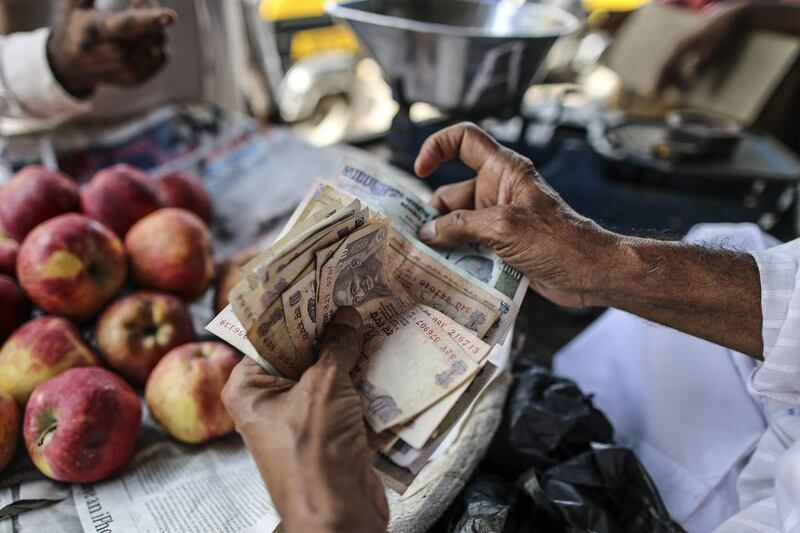Mumbai // The rupee yesterday strengthened following comments from central banks in India and the United States, but it later pared some of these gains after new data showed higher than expected inflation.
Raghuram Rajan, the governor of the Reserve Bank of India (RBI), on Wednesday took steps to soothe money markets by allaying fears that oil firms’ demand for dollars would add to the pressure on the rupee, which fell to a two-month low of 63.90 against the US dollar earlier that day.
Jane Yellen, the US Federal Reserve’s nominee for chairwoman, said on Wednesday that the US economy was still underperforming and there was more work to be done.
The Indian rupee fell to a series of historic lows over the summer, triggered by expectations that the Fed would wind down its stimulus programme.
The rupee strengthened to as much as 62.94 against the dollar yesterday. But it fell to 63.32 as the wholesale price index, India’s main inflation gauge, was revealed to have risen to an eight-month high of 7 per cent last month, driven by high food prices, from 6.46 per cent in September .
Food prices surged 18.19 per cent in October from the same month last year.
The rupee was trading at 63.14 late yesterday afternoon.
“The [inflation] figures will be worrying for the RBI and will spark debate of a [interest rate] hike come the next RBI policy meeting,” said Gaurav Kashyap, the head of futures at Alpari, a global online currency and commodities broker.
An interest rate hike makes borrowing more expensive and helps to control inflation, but it is not seen as supporting economic growth.
Rate cuts, on the other hand, make capital cheaper and help to stimulate spending.
“There have been some positives – the current account deficit has fallen to less than 3 per cent of GDP and less than $32 billion than the year before,” Mr Kashyap said. “But we will continue to watch for comments and moves from the Fed and its members as that will be the strongest driver of prices for the Indian rupee.”
He added that Alpari expected the rupee to fall to the 65 level against the dollar in the short term, and it could dive further to between 68 and 70 as the US fundamental picture becomes clearer.
“An improving data docket from the US in the weeks ahead will weigh down the prospects of the rupee as anticipation amongst markets of a taper soon than later will improve dollar sentiment,” Mr Kashyap said.
business@thenational.ae





